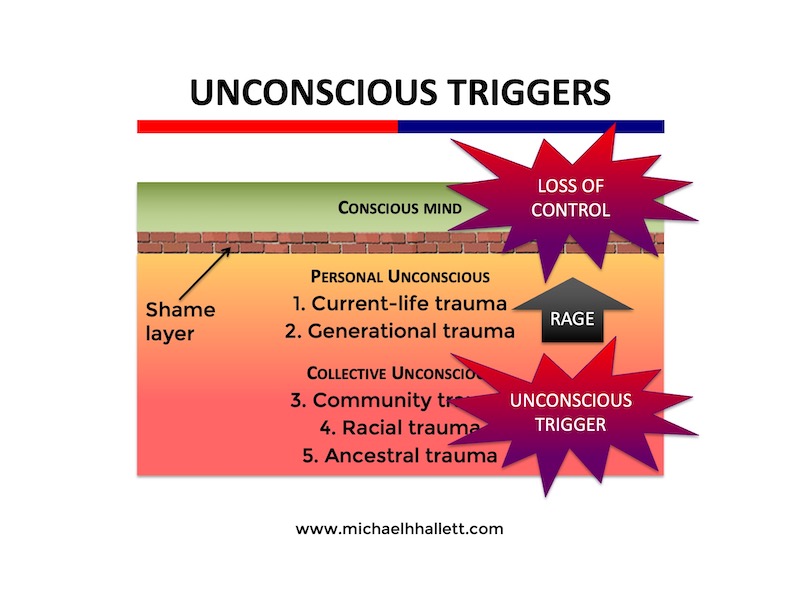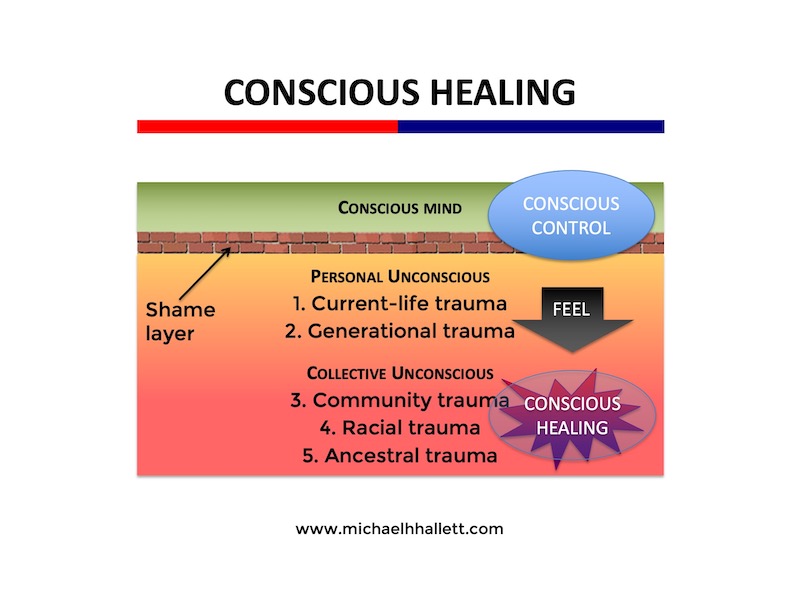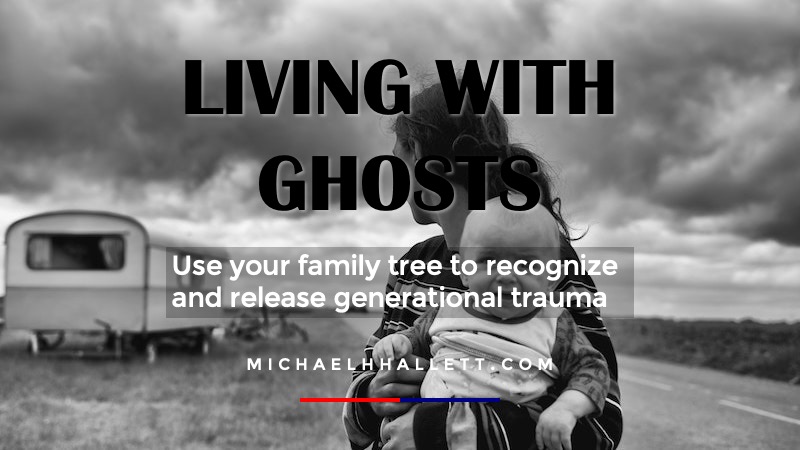You can only heal a trauma when it’s triggered
- 6 January 2023
- Posted by: Michael H Hallett
- Category: Emotional principles , Generational trauma , How-to & step-by-step ,

If healing trauma were easy, we would live in a vastly different, healthier, trauma-free world. We don’t. Because healing trauma is hard. Firstly, you must come out of denial that the trauma even exists. Then you must identify the trauma. You must want to heal it badly enough to endure the pain. Finally, you can only heal a trauma when it’s triggered.
The unconscious
We tend to think of trauma quite generically. I hear people speak of their ‘family trauma’, almost as if it was a departed family member, a vague presence still casting a shadow over family activities. There is no real specificity.
That’s because all trauma is fundamentally unconscious.
In Debugging the Universe, Laura Knight-Jadczyk describes the unconscious as “the realm from where our world manifests, in which are found unfathomable depths of the rejected, the unacknowledged, the unrecognised, the unknown and undeveloped elements of our existence.”
This is the shadowland where our traumas dwell. Yet they’re actually a bunch of discrete, specific traumas, rolled up like a ball of wool, seemingly with no beginning and no end.
These traumas come from several possible sources—current-life, recent family generations, distant ancestors, our wider community, racial trauma. They overlap and interpenetrate each other; paradoxically they are discrete yet ultimately inseparable.
Triggers
Each of these traumas has a specific trigger. A word, an impression, an action that activates them. And when it’s triggered, it explodes.
This explosion releases a torrent of volatile emotions. Fuelled by rage, they erupt out of our unconscious, breaking through the shame layer—a layer of emotional concrete that usually keeps our unconscious feelings at bay—and overwhelm our conscious mind.
At this point, we often lose rational control. We react, we snap. We hit back—verbally or even physically. Or we stalk out. Withdraw. Fight or flight.
As social theorist Edward Carpenter observed in Civilization – it’s cause and cure (1899), emotions always trump thoughts.
 At this point, our greatest desire is to get-the-hell-back-to-stability—for the torrent of painful, shameful, volatile feelings to subside. To restore order and rational control.
At this point, our greatest desire is to get-the-hell-back-to-stability—for the torrent of painful, shameful, volatile feelings to subside. To restore order and rational control.
Yet this is also the only point of leverage for healing the trauma. This point, when we’re at our weakest, with the least control over ourselves, is the critical juncture.
Because you can only heal a trauma when it’s triggered.
How to heal trauma
The critical thing to understand here is that the torrent of upwelling rage creates an opening into our unconscious, which is otherwise a closed system.
In her family memoir The Architect of Desire, Suzannah Lessard compares the shame layer with an oil slick. “Like reflections on water, it is automatically self-sealing: the challenge is not so much to pierce the slick of reflections as to maintain the break.”
Maintain the break? Excuse me?
Doesn’t that mean lengthening the experience of those painful, putrid energies?
Yes. Because this opening is the access point to heal the trauma.
Dive into it. Hold it open for as long as you can stand—for we’re about to make those painful, putrid energies more painful and more putrid.
Counter-intuitive
Yes, this is counter-intuitive—but that’s where we’re headed. Stay with it.
Laura Knight-Jadczyk writes: “People do not realize that, in order to diminish darkness, they must focus on it.” For ‘darkness’—the darkness of the unconscious—substitute ‘trauma’. For ‘focus’, substitute ‘feel’. This is not a mental process; it’s an emotional one.
Feel into these raw, ravaged energies with complete acceptance. Neutrality is critical. Don’t judge them, don’t judge yourself; don’t judge whatever the source of the trauma was. Just feel. You may experience an incredible, almost unbearable rawness.
 You’ve hit trauma healing gold. Stay in that place.
You’ve hit trauma healing gold. Stay in that place.
Imagine you’ve got a tap. You can close that tap and feel less of the rawness. You can open it and take on more of the pain. Try it—it may take some practice, but you’re in control.
Talk to the trauma. Reassure it. “I know you’re there. I know you’ve been trying to protect me. Thank you for that.” Remember, the unconscious contains that which we’ve rejected. This part of you has been rejected all your life, possibly your ancestors’ lives as well.
When you’re ready, release it. “I release you to serve me in a higher way.” Be gentle. Don’t rush. You’re dealing with energies that have been compacted for lifetimes.
Yet knowing that the triggered state is the only opening paves the way.
ONLINE COURSE

Photo by Andrey Zvyagintsev on Unsplash
